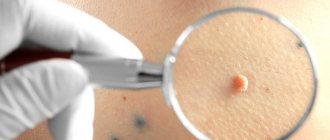Herpesvirus infections are a group of infectious diseases that are caused by viruses from the Herpesviridae family, can occur in the form of localized, generalized, recurrent forms of the disease, and have the ability to persist (the virus is constantly present) in the human body.
Herpesvirus infections (HVI) are among the most common human viral diseases. Their infection and morbidity rates are increasing every year. In all countries of the world, 60-90% of the population is infected with one or another herpes virus.
Etiology
Herpes viruses contain double-stranded DNA and have a glyco-lipoprotein envelope. The sizes of viral particles are from 120 to 220 nm.
Today, 8 types of herpes viruses that have been identified in humans have been described:
- two types of herpes simplex virus (HSV-1, HSV-2),
- varicella zoster virus (VZV or HHV-3),
- Epstein-Barr virus (EBV or HHV-4),
- cytomegalovirus (CMV or HHV-5), HHV-6, HHV-7, HHV-8.
Based on the biological properties of viruses, 3 subfamilies of herpes viruses have been formed: (alpha herpes viruses, beta herpes viruses and gamma herpes viruses). A-herpesviruses include HSV-1, HSV-2, VZV.
Betaherpesviruses include CMV, HHV-6, HHV-7. They, as a rule, multiply slowly in cells, cause an increase in the affected cells (cytomegaly), are capable of persistence, mainly in the salivary glands and kidneys, and can cause congenital infections. Gammaherpesviruses include EBV and HHV-8.
Herpes simplex virus types 1 and 2
The term “herpes infection” (HI) is usually used to refer to diseases that are caused by HSV-1 and HSV-2. The source of HSV infection are sick people with various forms of the disease, including latent ones, as well as virus carriers.
HSV-1 is transmitted by airborne droplets and contact. When the virus gets on the skin during a cough or sneeze, it is contained in droplets of saliva and survives for an hour. On wet surfaces (washbasin, bathtub, etc.) it remains viable for 3-4 hours, which is often the cause of disease outbreaks in preschool institutions. Infection can occur through kissing, as well as through household items that are infected with the saliva of a patient or virus carrier. HSV-2 is transmitted sexually or vertically. With the latter, infection occurs during childbirth (contact with the mother's birth canal), transplacentally or through the cervical canal in the uterine cavity. Due to the fact that viremia occurs during generalization of infection, transfusion or parenteral transmission of HSV-2 infection is also possible. HSV-2 usually causes genital and neonatal herpes.
Children are most susceptible to GI between 5 months and 3 years of age. Depending on the mechanism of infection, acquired and congenital forms of HI are distinguished. Acquired HI can be primary and secondary (recurrent), localized and generalized. A latent form of GI is also isolated.
No infection has such a variety of clinical manifestations as the herpes virus. It can cause damage to the eyes, nervous system, internal organs, mucous membrane of the gastrointestinal tract, oral cavity, genitals, can cause cancer, and has a certain significance in neonatal pathology and the occurrence of hypertension. The spread of the virus in the body occurs through hematogenous, lymphogenous, and neurogenic routes.
The frequency of primary herpesvirus infection increases in children after 6 months of life, when antibodies received from the mother disappear. The peak incidence occurs at the age of 2-3 years. HI often occurs in newborns; according to a number of authors, it is diagnosed in 8% of newborns with general somatic pathology and in 11% of premature infants.
According to WHO, diseases caused by the herpes simplex virus (HSV) are the second leading cause of death from viral infections after influenza. Solving the problem of diagnosing and treating herpesvirus infection with manifestations on the oral mucosa is one of the most important tasks of practical medicine.
In the last decade, the importance of herpesvirus diseases as a public health problem has been constantly growing throughout the world. Members of the human herpesvirus family infect up to 95% of the world's population.
Primary forms of GI include: infection of newborns (generalized herpes, encephalitis, herpes of the skin and mucous membranes), encephalitis, gingivostomatitis, Kaposi's eczema herpetiformis, primary herpes of the skin, eye, herpetic panaritium, keratitis. Primary HI occurs due to initial human contact with HSV. As a rule, this occurs in early childhood (up to 5 years). In adults aged 16-25 years who do not have antiviral immunity, primary HI may more often be caused by HSV-2. 80-90% of initially infected children carry the disease latently, and only in 10-20% of cases are clinical manifestations of the disease observed.
Secondary, recurrent forms of GI are herpes of the skin and mucous membranes, ophthalmic herpes, and genital herpes.
Treatment of Dühring's dermatitis herpetiformis
The doctor prescribing examinations, tests and treatment must be a qualified specialist in the field of dermatology.
The patient is advised to exclude cereals and iodine-containing products from the daily diet. Complex treatment includes the use of medications. Treatment in cycles of five to six days with short breaks is necessary with dapsone, DDS, sulfapyridine and other drugs of the sulfone group. In unsuccessful cases, therapy is replaced with corticosteroids.
The symptoms of the disease are treated separately: the patient is prescribed medications that reduce the sensation of itching, burning and tingling. This could be Claritin, Erius or other antihistamine medications.
To relieve the painful manifestations of Dühring's dermatitis herpetiformis, warm baths with a weak solution of potassium permanganate are prescribed.
Epstein-Barr virus infection
An infectious disease caused by the Epstein-Barr virus (EBV) and characterized by a systemic lymphoproliferative process with a benign or malignant course.
EBV is isolated from the body of a patient or virus carrier with oropharyngeal secretions. Transmission of the infection occurs through airborne droplets through saliva, often when a mother kisses her child, which is why EBV infection is sometimes called the “kissing disease.” Children often become infected with EBV through toys contaminated with the saliva of a sick child or a virus carrier, when using shared utensils and linen. Blood transfusion and sexual transmission of the infection are possible. Cases of vertical transmission of EBV from mother to fetus have been described, suggesting that the virus may be the cause of intrauterine developmental anomalies. Contagiousness during EBV infection is moderate, which is probably due to the low concentration of the virus in saliva. The activation of infection is influenced by factors that reduce general and local immunity. The causative agent of EBV infection has a tropism for the lymphoid-reticular system. The virus penetrates the B-lymphoid tissues of the oropharynx and then spreads throughout the body's lymphatic system. Infection of circulating B lymphocytes occurs. The DNA virus penetrates into the nuclei of cells, while the proteins of the virus give infected B-lymphocytes the ability to continuously multiply, causing the so-called “immortality” of B-lymphocytes. This process is a characteristic feature of all forms of EBV infection.
EBV can cause: infectious mononucleosis, Burkitt's lymphoma, nasopharyngeal carcinoma, chronic active EBV infection, leiomyosarcoma, lymphoid interstitial pneumonia, hairy leukoplakia, non-Hodgkin's lymphoma, congenital EBV infection.
Serological tests
Patients with dermatitis herpetiformis usually have specific antibodies that may be found in patients with celiac disease. Among them, the IgA antibody test to tissue transglutaminase is considered the most sensitive and specific diagnostic method for first-line serological testing in patients with suspected dermatitis herpetiformis. Some patients may have a deficiency of IgA antibodies to tissue transglutaminase. Specific and sensitive serological markers of dermatitis herpetiformis are also IgA+IgG total antibodies to endomysium (EMAS), IgA+IgG total antigliadin (anti-DGP) and IgA antibodies to epidermal tissue transglutaminase (anti-TGe IgA).
Anti-TSH antibodies (IgA antibodies to tissue transglutaminase)
Anti-TSH antibodies belong to the IgA1 subclass and represent a marker of intestinal damage and a test of adherence to a gluten-free diet in patients with dermatitis herpetiformis/celiac disease. Commercially available enzyme-linked immunosorbent assay (ELISA) kits have a sensitivity ranging from 47% to 95% and a specificity of more than 90% for the diagnosis of dermatitis herpetiformis. The ELISA method for determining the listed serological markers of celiac disease is currently quite sensitive, cheap and simple.
EMAS (IgA+IgG total antibodies to endomysium)
These antibodies are directed against the connective tissue surrounding smooth muscle cells. Antibody detection is based on indirect immunofluorescence in monkey esophageal tissue. EMA testing showed specificity close to 100%, and sensitivity of the order of 52%-100% in diagnosing dermatitis herpetiformis. Since these antibodies are absent in patients on a gluten-free diet, this test is a marker of diet compliance. However, as more expensive, time-consuming, and technician-dependent, testing should only be performed in cases of doubt.
Anti-DGP antibodies (Total Ig A + IgG antibodies to deamidated gliadin peptides)
In patients with celiac disease, DGP anti-antibodies show lower sensitivity and specificity than anti-TSH and EMAS. In clinical practice, the DGP anti-antibody test should be used only in doubtful cases.
Anti-ETG antibodies
(IgA antibodies to epidermal tissue transglutaminase)
Recent data have shown that patients with dermatitis herpetiformis have antibodies directed against epidermal tissue transglutaminase, which is considered an autoantigen of dermatitis herpetiformis. For dermatitis herpetiformis, the sensitivity of the method is in the range of 52%-100%, and the specificity is above 90%, which is similar to the test for anti-TSH antibodies. This test is not widely available in all laboratories and is currently used only for research purposes and not for clinical management of patients.
Other antibodies
Other antibodies that are currently being tested as markers for celiac disease and/or dermatitis herpetiformis include the anti-TSH neoepitope antibody and the anti-GAF3X antibody. Although they may be good markers of dermatitis herpetiformis, further research is needed to confirm their usefulness in diagnosing the disease.
Varicella zoster infection
Varicella-zoster virus causes chickenpox and herpes zoster. The source of infection for chickenpox can only be a person with chickenpox or herpes zoster, including the last 24-48 hours of the incubation period. Convalescent chickenpox remains infectious for 3-5 days after the skin rash stops. The disease cannot be transmitted through a third party. Intrauterine infection with chickenpox is possible in the case of a pregnant woman. Chickenpox can occur at any age, but in modern conditions the maximum number of patients occurs in children aged 2 to 7 years. Herpes zoster develops after primary infection with the Varicella-zoster virus, after the infection passes into a latent form, in which the virus is localized in the spinal, trigeminal, sacral and other nerve ganglia. Endogenous reactivation of the infection is possible.
Cytomegalovirus infection
An infectious disease that is caused by cytomegalovirus (CMV) and is characterized by a variety of clinical forms (from asymptomatic to severe generalized with damage to many organs) and course (acute or chronic). CMV transmission factors can be almost all biological substrates and human secretions that contain the virus: blood, saliva, urine, cerebrospinal fluid, vaginal secretions, sperm, amniotic fluid, breast milk. Potential sources of infection are organs and tissues in transplantology, as well as blood and its products in transfusiology. Routes of transmission of CMV infection: airborne, sexual, vertical and parenteral.
There are congenital and acquired forms of CMV infection. Congenital CMV infection. During antenatal infection of the fetus, infection occurs predominantly transplacentally. During intrapartum infection, CMV enters the body through aspiration of infected amniotic fluid or secretions from the mother's birth canal.
In older children, acquired CMV infection occurs in a subclinical form in 99% of cases. The most common manifestation of this form of CMV infection in children over one year of age is mononucleosis-like syndrome. As a rule, a clinical picture of acute respiratory disease is observed in the form of pharyngitis, laryngitis, and bronchitis.
Infections caused by the sixth, seventh and eighth types of herpes viruses Type six herpes viruses (HHV-6) can cause erythematous and roseolous rashes (sudden exanthema), lesions of the central nervous system and bone marrow in immunocompromised children. Herpesvirus type seven (HHV-7) causes neonatal exanthema
For the diagnosis of herpes infection, cytological, immunofluorescent, serological and PCR methods are valuable. Virological testing for herpes infection reveals complement-fixing antibodies to HSV-1 or -2 in the mother's blood, fetal cord blood and amniotic fluid. PCR method. The material for testing for herpes is blood, throat swabs, the contents of blisters, ulcers, and urine.
The study of specific antibodies of various subclasses: IgM, IgG1-2, IgG3 and IgG4 to herpes viruses is important. The detection in the blood serum of children of specific immunoglobulins M, IgG3, IgG1-2 in a titer > 1:20, viral antigen and specific immune complexes with antigen indicates the severity of the infectious process (active phase), and the determination of only specific IgG4 is regarded as the latent phase of infection or carriage of maternal antibodies.
Direct immunofluorescence
Direct immunofluorescence reveals two patterns: 1) granular IgA deposits in the dermal papillae and 2) granular IgA deposits along the basement membrane. Sometimes a combination of both options may occur. A third variant has recently been described, consisting of fibrillar IgA deposits primarily located at the tips of the dermal papillae. This pattern is often observed in up to 50% of Japanese patients with dermatitis herpetiformis.
Other types of immune deposits that can be detected by direct immunofluorescence include the presence of perivascular IgA deposits in the upper dermis, as well as granular IgM C3 deposits at the dermal-epidermal junction and/or dermal papillae.
The sensitivity and specificity of direct immunofluorescence in the diagnosis of dermatitis herpetiformis is about 100%. Additionally, according to ESPGHAN guidelines for celiac disease, positive direct immunofluorescence in patients with suspected dermatitis herpetiformis eliminates the need for duodenal biopsy to diagnose celiac disease. Direct immunofluorescence should be performed on intact skin, since in damaged skin IgA may be eliminated by inflammatory cells. In addition, patients should be on a normal diet during the examination period because IgA deposits may disappear from the skin in patients on a gluten-free diet. If the patient is on a gluten-free diet, then he should be switched to a diet with normal gluten content at least a month before the biopsy.
In case of negative results of direct immunofluorescence in patients with a high clinical suspicion of dermatitis herpetiformis, a repeat biopsy from another unaffected skin area should be repeated. Negative results of direct immunofluorescence in dermatitis herpetiformis are very rare. In such cases, a combination of clinical, histological and serological data helps to establish the diagnosis.









